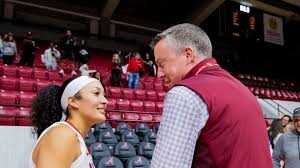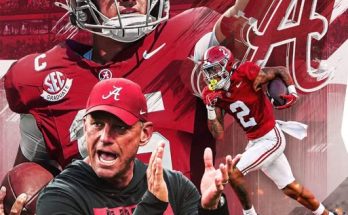One of the most seismic shifts in college athletics has arrived, and at its center stands Alabama athletic director Greg Byrne. The June 5 approval of the House v. NCAA settlement is nothing short of historic: it ends the long-standing prohibition on direct payments from schools to student-athletes. Each Division I institution is now permitted to distribute up to $20.5 million annually—about 22 percent of its athletic revenue—to athletes, beginning July 1, 2025, with the cap expected to rise over time
rollbamaroll.com
+15
apnews.com
+15
si.com
+15
.
Yet with great opportunity comes enormous complexity. Alabama, like other Power Five programs, must be strategic. Byrne has emphasized that Crimson Tide Athletics was planning for this moment for a while: “One of the biggest transformational changes in college athletics is upon us, and Alabama Athletics has been planning for this day and making decisions that best position our department for long term success”
si.com
+1
wsfa.com
+1
. The question, Byrne notes, isn’t whether Alabama will fund revenue sharing—it’s how.
Byrne has mapped out a revenue-centric allocation model. Of the $20.5 million Cap, the first $2.5 million will be converted into new scholarships, leaving approximately $18 million for distribution to athletes directly
si.com
+2
on3.com
+2
on3.com
+2
. Why scholarships first? Byrne pointed out that every SEC school is required to commit $2.5 million in new scholarships, a baseline step in restructuring compensation. That leaves institutions to decide how best to use the remaining funds. At Alabama, Byrne and his team opted to divide that remainder along revenue lines.
“Football is the engine that pulls the train,” Byrne admitted, acknowledging football and men’s basketball as the two major profit generators. Those two programs will earn the largest shares of corporate revenue through the new model. But Byrne also stated Alabama will distribute a portion to four other ticketed sports—softball, baseball, gymnastics, and women’s basketball—a total of six sports being included
on3.com
si.com
+1
on3.com
+1
. By Byrne’s calculations, these are the sports that generate ticket revenue and public interest, making them logical participants in revenue sharing.
Byrne described the model as fluid. With limited precedent across Division I, institutions are finding their footing. “I’ve heard all over the yard how schools are doing it and how many sports,” Byrne said, referencing peer schools using three‑sport models or token distributions across a broader range. “I’m not sure how much of a difference that will make at the end of the day when you just carve off a small sliver for a sport, but we have a plan. I’ve told our coaches it’s fluid”
si.com
+1
on3.com
+1
. It’s a flexible starting point rather than a fixed destination.
Under Alabama’s approach, the six sports form two tiers. Tier 1 are football and men’s basketball, which can claim the lion’s share of the revenue pool. Tier 2 includes softball, baseball, gymnastics, and women’s basketball—ticketed sports that may not generate significant revenue but represent strategic institutional priorities and gender equity considerations. This tiered model aims to honor financial contribution while maintaining balanced support.
Alabama’s inclusion of women’s sports—softball, gymnastics, women’s basketball—also reflects an important signal. With Title IX implications looming over the settlement, Byrne and other athletic directors are mindful of equitable distribution. Though the initial model awards more to football and men’s basketball, the presence of women’s programs in Tier 2 demonstrates a commitment to inclusivity at launch.
Practical administration of the program will rely on data and expertise. Alabama announced a partnership with Scout, a fintech company specialized in athlete financial services. Scout will help manage revenue share distribution, salary cap tracking, taxes, LLC formation, savings, investments and financial education
si.com
. Together with Yea Alabama (the university’s NIL collective), Learfield, and Crimson Tide Sports Marketing, Alabama athletes will have structured NIL and revenue-sharing opportunities under sophisticated financial oversight.
Byrne also called out the potential—and risks—of bringing in private equity funding. He explained that while Alabama has been approached by private equity firms, it has declined due to the misalignment between profit-driven investors and the broader obligations of collegiate athletics—academic, Olympic sports, Title IX, and more. “Private equity is not going to care about Olympic sports … bottom line driven,” Byrne said. “You better make sure you can far exceed the growth you can do on your own if you’re going to bring somebody else in”
arizonasportsfans.com
+15
on3.com
+15
si.com
+15
. The institutional fabric of college sports, he argued, is not easily reconciled with investor expectations.
Why does this matter? Because after decades of NCAA amateurism rules, colleges must reinvent their financial playbook. College sports revenues—which topped $18 billion in 2024—have been dominated by television, sponsorships, ticket sales, donor support, and booster clubs . With the new revenue-sharing model, a distributed portion of those revenues will be turned back to athletes. That’s the promise—but nearly every program faces pressure to balance support for revenue-generating sports and sustaining broad-based athletics.
Other schools, such as UConn for its Big East programs, are approaching revenue sharing aggressively: UConn intends to allocate $18 million of its $20.5 million cap primarily via donor support, but they also caution about deepening inequalities between high-revenue and Olympic sports
ctinsider.com
+1
on3.com
+1
. Many athletic directors share Byrne’s concern about the long-term viability of Olympic and non-revenue sports if revenue-sharing is too narrowly focused.
Byrne, arguably, has taken a middle path: reward high-earning sports while not abandoning others. But he repeatedly emphasizes fiscal sustainability: “How do you keep your department healthy long‑term so you can keep offering opportunities?”
rollbamaroll.com
. While the national narrative will focus on millionaire quarterbacks and elite men’s basketball phenoms, Byrne highlights the ecosystem: donor‑supported NIL via Yea Alabama, organized distribution via Scout, partnerships with Learfield and marketing teams, and scholarship reinforcement.
The settlement isn’t just about future payments—it also includes distribution of $2.8 billion in backpay for past athletes from 2016–2024. However, a Title IX‐based appeal from eight female athletes could delay disbursement for up to a year and may reshape distribution based on gender equity
backingthepack.com
+4
apnews.com
+4
theguardian.com
+4
. Regardless of legal delay, the institutional revenue share model goes into effect July 1, 2025.
Once activated, Alabama must navigate evolving compliance burdens: salary cap tracking, NIL deal transparency (now requiring disclosure of agreements over $600), adherence to Title IX, and anti‑fraud enforcement via the newly created College Sports Commission
theguardian.com
+1
wsj.com
+1
backingthepack.com
+2
dukebasketballreport.com
+2
apnews.com
+2
. Byrne’s plan to use Scout is not only helpful—it may be obligatory.
It’s also a moment of redefinition. Schools may reshape the size of their offerings. Baseball programs, for instance, are adjusting rosters—from 40 to 34 players—and scholarships can now stretch to 34 full rides instead of the old 11.7 “equivalencies”
si.com
+1
dukebasketballreport.com
+1
. That reshaping requires coaching, strategy, and budget shifts. Byrne has already extended coach Rob Vaughn’s contract, signaling investment amid the upheaval
si.com
.
But the broader question looms: what is a student-athlete? Byrne, along with NCAA and lawmakers, continues to resist classifying athletes as employees even as schools distribute millions and coaches earn multimillion-dollar salaries
apnews.com
+4
washingtonpost.com
+4
apnews.com
+4
. A string of bills in Congress are attempting to navigate that balance—preserving amateurism, avoiding employee‑like status, shaping the rules of NIL, and locking in antitrust protections .
As Byrne put it: this is transformational—and tricky. The strategic focus isn’t just winning today; it’s sustaining a department that serves dozens of sports, athletes, and students for years to come. His insistence on a data‑driven, balanced, and financially sustainable rollout places Alabama in the “responsible innovator” group: willing to reward top revenue sports heavily, begin Tier 2 distribution, invest in scholarships, and invest in compliance and support infrastructure.
This summer marks the beginning of a new chapter. Players across football, basketball, softball, baseball, gymnastics, women’s basketball, and beyond will see revenue‑share payments for the first time. Crimson Tide athletes, for example, will benefit from Yea Alabama NIL deals, institutional revenue shares tracked by Scout, and Learfield and marketing support rolling together.
In the longer run, Alabama may adjust this allocation year to year—adding or removing sports, shifting percentages, adjusting scholarship priorities—as Byrne flags the model is fluid. For now, they’ve launched aggressively, while also minimizing risk to non-revenue sports and institutional obligations.
Byrne’s emphasis on strategic restraint—not letting private equity drive decisions—and his investments in financial tools and compliance signal that Alabama isn’t just racing for headlines. Its vision: use revenue sharing to fuel sustained competitiveness, fiscal accountability, and opportunity across all facets of the athletic department.
Within the crowded landscape of Power Five programs, Alabama’s tiered, revenue‑based, compliant, scholarship‑first rollout sets a strong benchmark. Whether it becomes a blueprint for SEC peers remains to be seen, but Byrne has framed Alabama Athletics not just as a beneficiary of this transformation, but as a thoughtful steward of it.
The big test lies still ahead: as October’s Title IX appeals unfold and initial payments begin in July, will teams—and fans—see results? Will scholarships emerge? Will gymnasts, softball players, and women’s basketball stars feel the benefit alongside the quarterbacks and power forwards? Byrne’s model suggests yes—but the coming year may define whether the balance holds.
Ultimately, this settlement may be remembered as the moment amateurism ended—but the way programs like Alabama manage it will determine whether we witnessed evolution or erosion of the collegiate athletic ideal. Greg Byrne’s path suggests it is possible to do both: innovate responsibly, invest smartly, and emerge stronger across all fronts.



